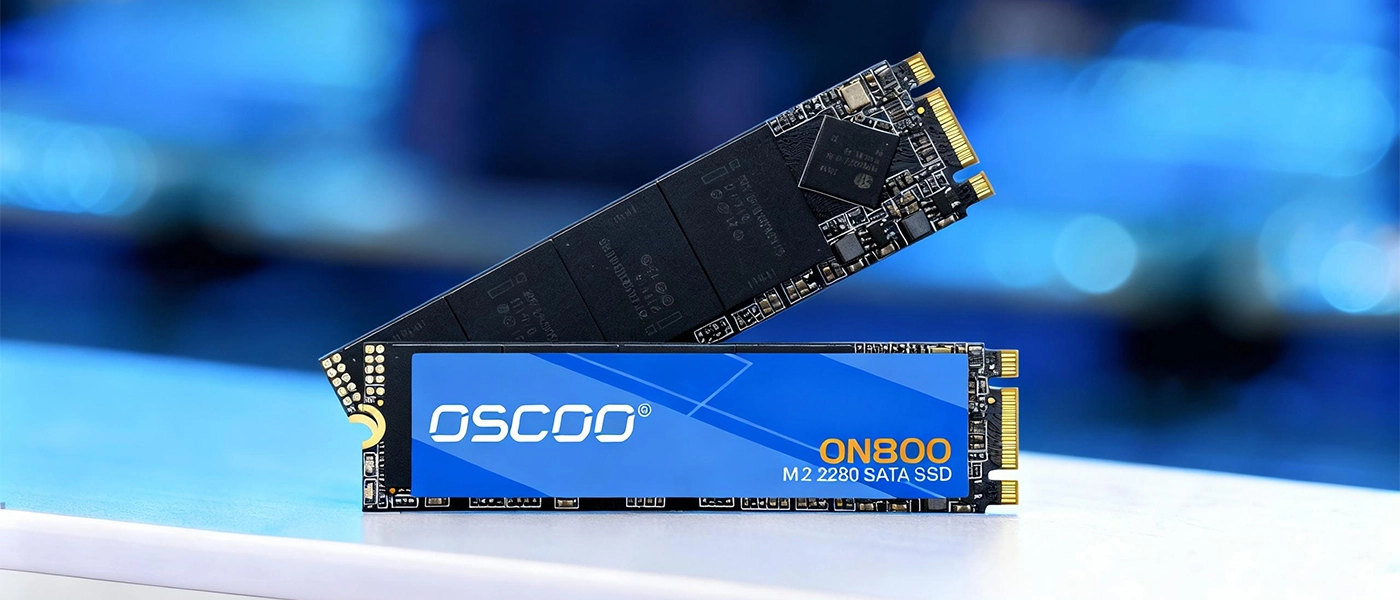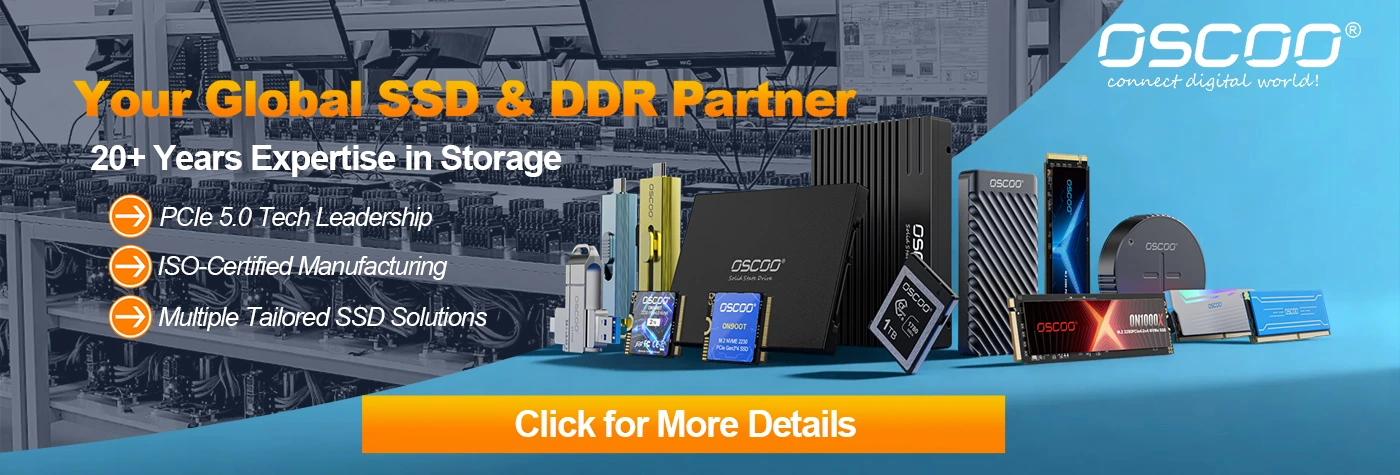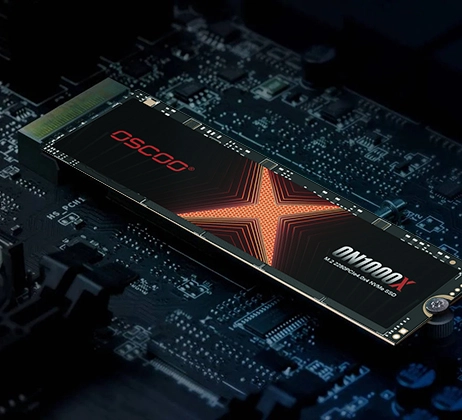The reason your phone’s photos and your computer’s documents remain safe even after power is turned off is largely thanks to a type of memory called NAND flash. It is the cornerstone of the modern digital world — a kind of non-volatile memory, which means it can retain data even without power. From smartphones and solid-state drives to USB flash drives, almost all of our everyday electronic devices rely on it. Let’s uncover the mystery behind this essential technology step by step.

What Is NAND Flash?
Simply put, NAND flash is an electronic medium used to store data, and its core feature is non-volatility. This means that even when power is completely lost, the data can still be preserved for a long time. This is very different from the computer’s RAM, which clears all data once power is cut. The name “NAND” comes from the logic gate structure used inside — the “NOT-AND” circuit.
To better understand how it works, imagine a giant multi-story parking garage. Each parking space represents the smallest storage unit that holds data. A row of parking spaces forms a page, which is the basic unit for cars (data) to move in or out. A whole floor or zone forms a block. When the parking lines need to be redrawn, the entire block must be cleared first. Similarly, in NAND flash, an entire block must be erased before new data can be written. This is a key feature that defines how NAND flash works.
How Does NAND Flash Work?
The secret behind NAND flash’s ability to store data lies in its core component — the floating-gate transistor. You can think of this transistor as a switch with multiple gates. One part, called the floating gate, is completely isolated by an insulator, like a sealed trap for electric charges. Data is stored in the form of electrons inside this floating gate.
When writing data — also known as programming — a high voltage is applied to inject electrons into the floating gate through the insulating layer. These trapped electrons change the transistor’s electrical characteristics, representing a stored “0.” Conversely, if there are few electrons in the floating gate, it represents a “1.”
When reading data, the controller applies a lower voltage to the transistor and checks whether current flows through. If the floating gate has electrons, the transistor becomes harder to conduct and the current is weak — interpreted as “0.” If there are few electrons, the transistor conducts easily and the current is normal — interpreted as “1.”
However, NAND flash has one crucial limitation: it cannot simply overwrite old data like erasing a chalkboard. Before writing new data, the storage cell must first be restored to its initial “1” state, a process called erasing. The smallest erase unit is not a single cell or page, but a block. It’s like having to move out all cars from an entire parking zone before repainting the lines. When data on one page changes, the controller must copy the valid data from the entire block to another place, erase the block, and then write the new data. This “erase-before-write” process is key to understanding NAND flash’s operation and lifespan limits.
The NAND Flash Family — From SLC to QLC and 3D NAND
To balance capacity, cost, performance, and lifespan, NAND flash has evolved into several types. It can be classified by two main factors:
How many bits each cell can store, and
Whether its physical structure is planar (2D) or stacked (3D).
By bits per cell, NAND flash falls into four main categories:
SLC (Single-Level Cell): Stores 1 bit per cell, with only two states. It’s extremely fast, durable, and reliable, but also the most expensive. It’s used in enterprise servers and industrial applications that require maximum performance.
MLC (Multi-Level Cell): Stores 2 bits per cell with four states. It balances speed, lifespan, and cost and was once common in high-end consumer SSDs, though it’s now largely replaced by newer types.
TLC (Triple-Level Cell): Stores 3 bits per cell, with eight states to distinguish. It’s slower and has a shorter lifespan but offers higher density and lower cost, making it the mainstream choice for smartphones and consumer SSDs today.
QLC (Quad-Level Cell): Stores 4 bits per cell with sixteen states. It further lowers cost per gigabyte and increases capacity but has slower write speeds and shorter endurance, suitable for large-capacity storage or devices with infrequent writes.
Beyond increasing bits per cell, NAND underwent a major structural revolution: the move from 2D (planar) to 3D NAND. Early 2D NAND was like building single-story houses — to increase capacity, the cell size had to shrink, which quickly hit physical limits. 3D NAND, on the other hand, stacks cells vertically like skyscraper floors, allowing far more data in the same area. This structure not only breaks density limits but also improves reliability and endurance because it uses larger, more stable manufacturing processes. Today, 3D NAND has become the industry standard.
Advantages and Disadvantages of NAND Flash
Every technology has two sides, and NAND flash is no exception. Its advantages make it the backbone of modern storage, while its weaknesses define its practical limits.
Advantages
NAND flash has very high storage density, especially with 3D technology, allowing terabytes of data in a tiny space. This density leads to much lower cost per gigabyte, enabling large-capacity smartphones and SSDs. It has no moving parts, making it resistant to shock and vibration — ideal for mobile devices. It also consumes very little power, especially when idle, which is crucial for battery-powered electronics.
Disadvantages
The biggest issue is limited lifespan. Each memory cell can only endure a certain number of program/erase cycles before it wears out. The more bits per cell (from SLC to QLC), the shorter the lifespan. Write speed is also slower than read speed due to the “erase-before-write” process, which adds latency. Additionally, NAND chips contain defective blocks that must be managed by complex controllers using algorithms for wear-leveling und error correction. Over time, stored charge gradually leaks, causing data retention problems after many years without power.
Use Cases of NAND Flash Memory
NAND flash is everywhere in our digital lives. Its properties make it irreplaceable across many industries.
- In consumer electronics, NAND flash is the core storage component. The internal storage of smartphones and tablets consists of NAND chips, enabling fast app launches, massive photo and video storage, and safe data even after shutdowns. USB drives, SD cards, and microSD cards all use NAND flash to make data transfer easy and portable.
- In computing, NAND flash brought a revolution through the solid-state drive (SSD). Unlike mechanical hard drives, SSDs have no moving parts and offer far faster read/write speeds, reducing boot times, app load times, and file transfers. Their shock resistance and silent operation also improve the user experience, making SSDs standard in laptops and data center servers.
- Beyond personal devices, NAND flash has many industrial and enterprise uses. It powers car infotainment systems, dash cameras, and navigation systems. In IoT devices, it stores code and data. In cloud computing and data centers, massive arrays of SSDs provide fast caching and data services that keep the internet running.
In short, wherever long-term, stable, and fast data storage is needed — especially with size, power, and durability constraints — NAND flash is there.
Future Outlook and Emerging Alternatives
Though NAND flash is a mature technology, it continues to evolve while facing challenges from next-generation memory solutions.
Ongoing NAND evolution: 3D NAND is moving toward even more layers — over 500 today and climbing higher, like taller skyscrapers storing more data. To further boost density, engineers are exploring PLC (Penta-Level Cell), storing 5 bits per cell. However, more layers and states increase manufacturing complexity and reduce endurance and data retention. Future improvements will depend more on smarter controller algorithms, error correction, and signal processing to offset physical limitations.
Potential replacements: Emerging memories like MRAM (Magnetoresistive RAM) und FRAM (Ferroelectric RAM) offer extremely fast writes and almost unlimited endurance, but they are costly and low-density, used mainly in embedded systems. PCRAM (Phase-Change RAM) sits between DRAM and NAND in speed and lifespan, seen as a bridge between memory and storage, but large-scale commercialization remains difficult.
Overall, NAND flash — especially 3D NAND — will remain the mainstream high-capacity storage solution for the foreseeable future, thanks to its cost efficiency and mature ecosystem. New memory types will likely complement NAND in specialized areas rather than replace it entirely.
As a non-volatile memory technology, NAND flash has become an indispensable foundation of the digital age. Its high density, low cost, and reliability quietly support everything from personal devices to global data centers. From early SLC to dense 3D TLC and QLC, every technical advance has sought better balance among capacity, performance, and cost. Though limited by physical endurance, innovations like 3D stacking and advanced controllers keep it thriving. Looking ahead, while emerging technologies may complement it in niche areas, NAND flash will continue to serve as the core of mass data storage, carrying our expanding digital memories into the future.





